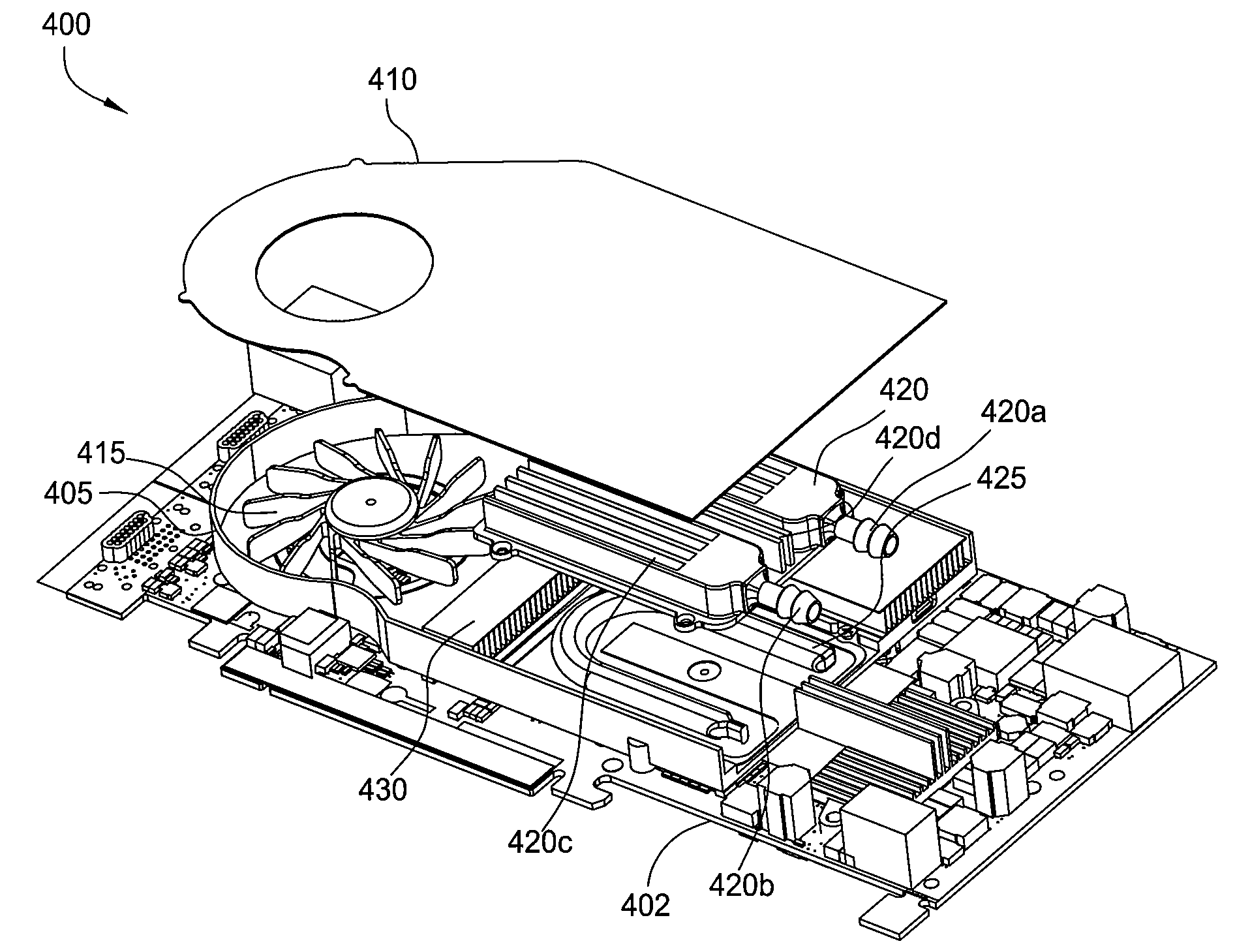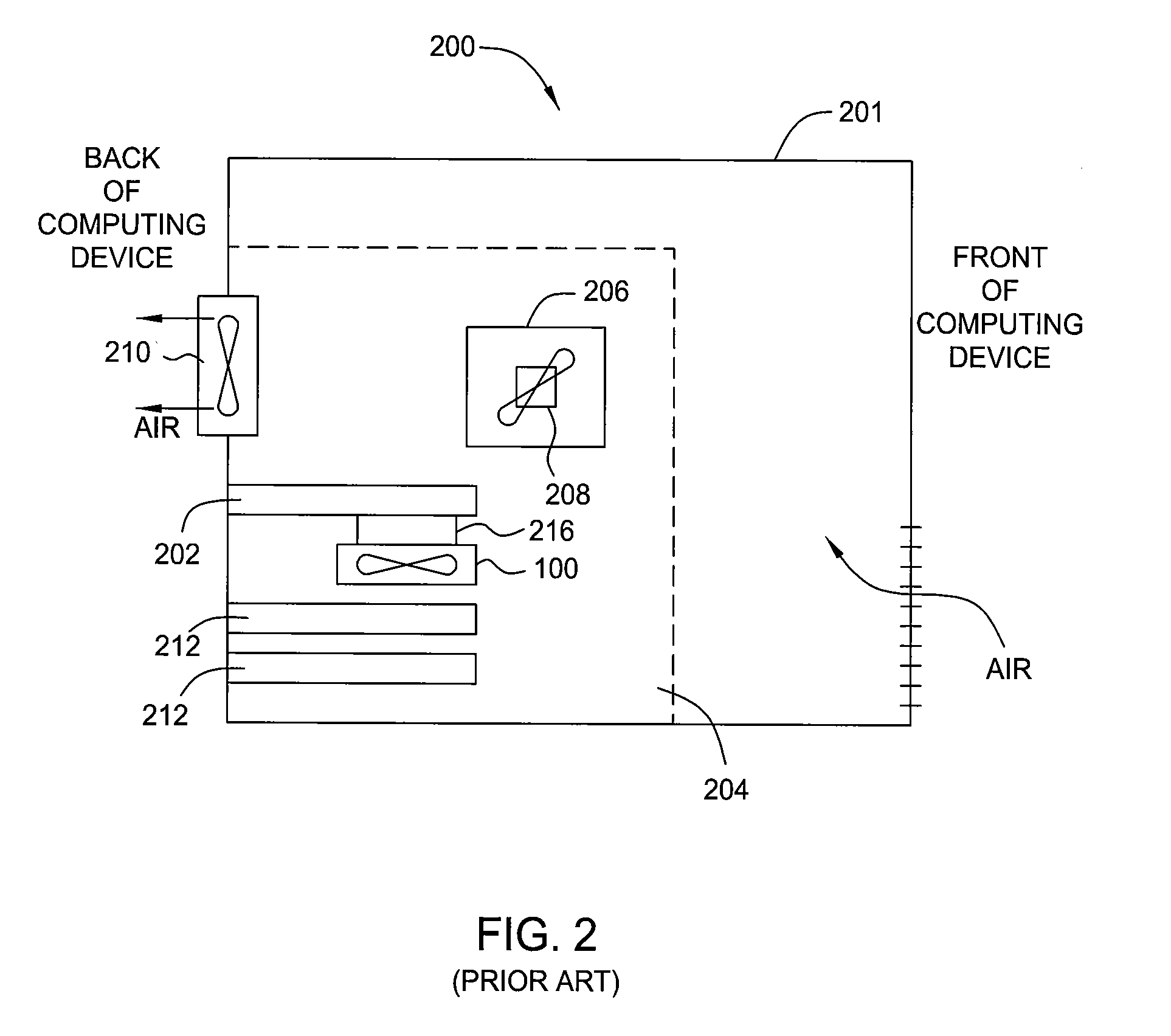Embedded Heat Pipe In A Hybrid Cooling System
a heat pipe and hybrid technology, applied in the field of systems, can solve the problems of high speed operation, large amount of heat generated by the gpu during operation, and large amount of unwanted acoustic noise, and achieve the effects of increasing the heat transfer surface area, reducing the amount of heat generated, and reducing the amount of noise generated
- Summary
- Abstract
- Description
- Claims
- Application Information
AI Technical Summary
Benefits of technology
Problems solved by technology
Method used
Image
Examples
Embodiment Construction
[0024]FIG. 4A is an exploded isometric view of a hybrid cooling system 400, according to one embodiment of the present invention. Hybrid cooling system 400 is configured to be thermally and structurally coupled to a printed circuit board (PCB), such as the graphics card 402 or the graphics card 202 of FIG. 2, and implemented with a computer system, such as the computer system 200 of FIG. 2. Mounted on a top side, the graphics card 402 includes GPU 416 (more clearly depicted in FIG. 4C) and other components, such as memory units (not shown) and a power supply (not shown). Preferably, the graphics card 402 is configured to connect to a computer system via a standard peripheral component interconnect PCI slot. Further, the hybrid cooling system 400 is configured so that when it is mounted to the graphics card 402, the cooling system 400 and the graphics card 402 will fit substantially within one standard PCI slot of a computer system. In alternate embodiments, the hybrid cooling system...
PUM
 Login to View More
Login to View More Abstract
Description
Claims
Application Information
 Login to View More
Login to View More - R&D
- Intellectual Property
- Life Sciences
- Materials
- Tech Scout
- Unparalleled Data Quality
- Higher Quality Content
- 60% Fewer Hallucinations
Browse by: Latest US Patents, China's latest patents, Technical Efficacy Thesaurus, Application Domain, Technology Topic, Popular Technical Reports.
© 2025 PatSnap. All rights reserved.Legal|Privacy policy|Modern Slavery Act Transparency Statement|Sitemap|About US| Contact US: help@patsnap.com



